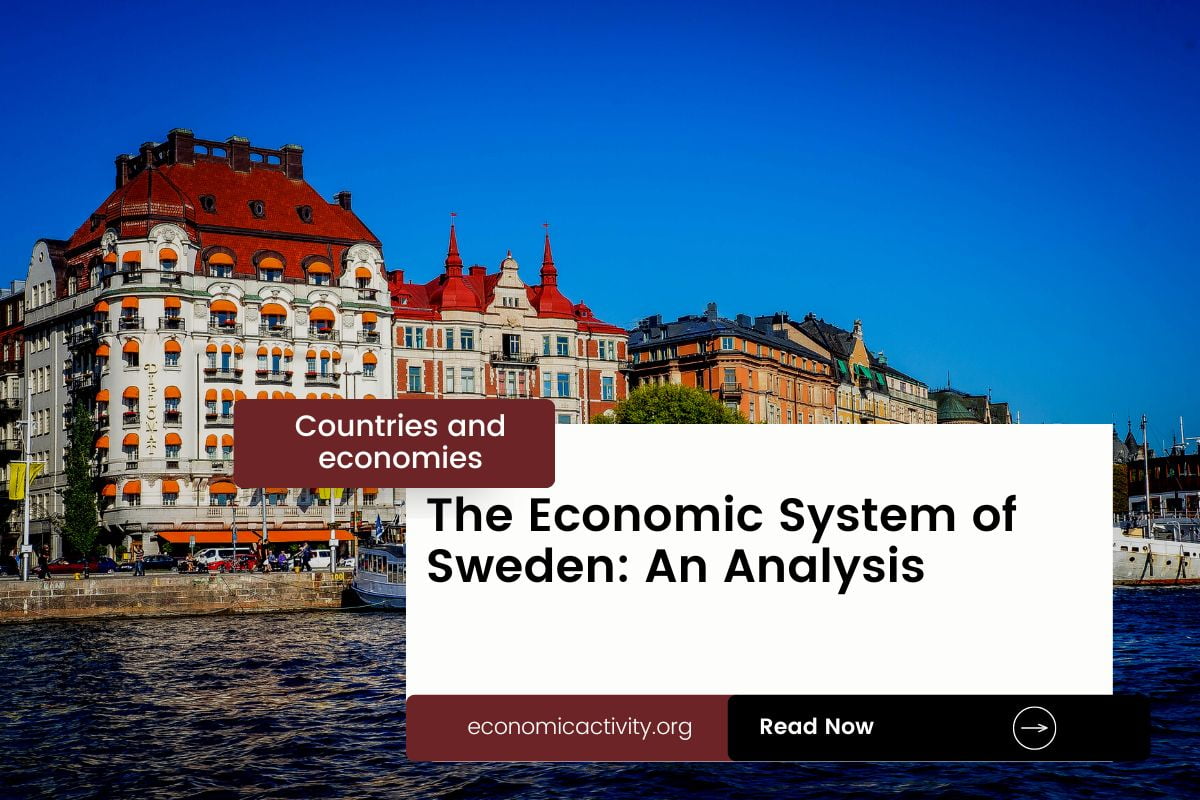What is the economic system of Sweden? The economy of Sweden is based on a mixed economy, that resembles a market economy. The country’s economic system combines elements of a market economy and a planned economy, individuals are free to work, produce, consume, and invest in any way they please.
Sweden has a highly developed and diverse economy with key sectors in manufacturing, services, and innovation. It is known for its world-leading companies in sectors such as automotive, telecommunications, pharmaceuticals, and engineering. Also, the country has a strong welfare system and emphasizes sustainable development.
In Sweden, the economy is composed of a private sector, consisting of individuals and businesses that make autonomous decisions based on self-interest, and a public sector, where the state determines the production and distribution of certain goods and services. No country is purely capitalist or purely communist.
What do the freedom indexes tell about the economic system of Sweden?
Now, to determine if a country is mostly a market economy or a planned economy, it is useful to examine some economic indexes. For instance, according to the 2022 Index of Economic Freedom, which measures the ability of every human to control his own labor and property, Sweden is ranked 11th globally and 8th in Europe indicating that the country has a mostly free economy.
In a similar way, the 2022 Freedom House index evaluates the state of political rights and civil liberties globally. Generally, market economies tend to align more with democracy and freedom, while command economies tend to be characterized by greater state control and fewer democratic and civil liberty protections. Sweden gets a perfect score of 100/100, which qualifies it as extremely Free.
Sweden is a country where the government does not control what people do for political reasons, and people have the freedom to choose (what, how much, and how to produce, whether to buy or not, selling price, etc.)
The Link Between Public Sector Employment and the Economic System of Sweden
An indicator of the extent to which the State is involved in the economy is the number of public sector employees. In Sweden, according to ILOSTAT, the number of public sector employees as a percentage of the total workforce is 29.3% (2020).In the country, the public sector tends to be small and efficient.
As a result, the number of public sector employees as a percentage of the total workforce is high compared to other countries, which averages 10%.
What do the biggest companies in Sweden say about the country’s economic system?
The biggest company in Sweden should also be looked at, as well as whether it is a state-owned or private company. In this case, is a world-leading provider of sustainable productivity solutions, offering a wide range of compressors, vacuum solutions, generators, pumps, power tools, and assembly systems. The company is a publicly-traded company listed on the Stockholm Stock Exchange. The ownership of Atlas Copco is distributed among private individual and institutional shareholders
More: Top 10 Biggest companies by revenue in Sweden
The historical factors that have influenced the economic system of Sweden
The current mixed economy system of Sweden is the result of the country’s strong social welfare system, its commitment to free trade, and its focus on innovation and technology. This system has allowed Sweden to remain competitive in the global economy while also providing a high quality of life for its citizens.
The government has considerable participation in the economy, but it isn’t restricting the economic activities of the private agents. Its economy combines the best elements of the market economy and a centrally planned economic system.





Leave a Reply